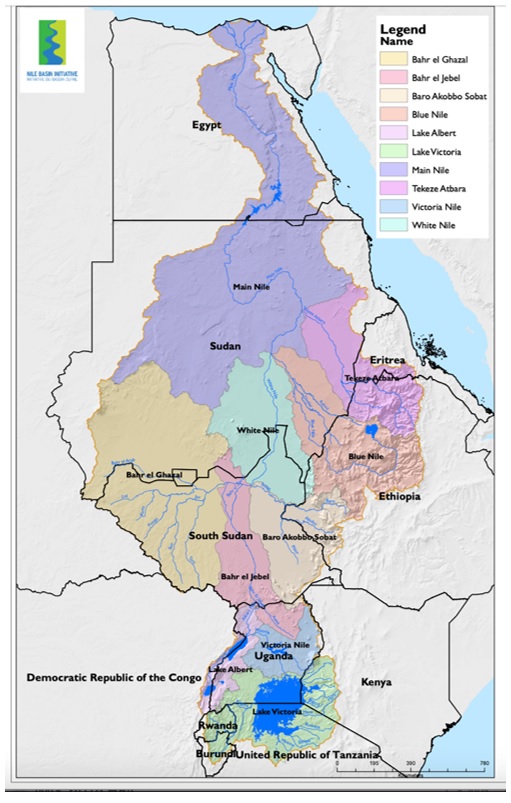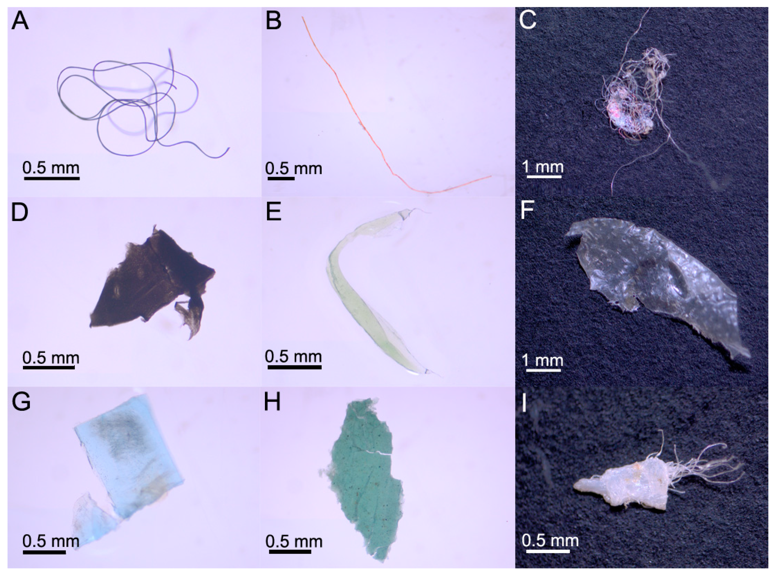The Nile River is one of the longest rivers in the world, flowing through Northeast Africa. As a result of the floods, the river provided food and water sources for ancient Egyptians, which led to population migration along the river and the development of civilizations. Many sources state different versions of the origin and historical value of the Nile, which have remained unknown for a long time. Moreover, in recent decades the ecological background of the river has changed significantly, making it one of the vulnerable environmental problems in the region. Therefore, this paper discusses different works on the Nile River’s geologic value and current natural issues, as well as provides reliable information.
The Nile is the second-longest river in the world, covering a length of 6650 km. Unlike other rivers, the origin of the Nile is not a mountain or precipitation waters. In fact, it is formed by the confluence of two rivers, utterly dissimilar in character (Fig.1). The longest source of the Nile is the White Nile (Tvedt, 2021). It begins in the mountains of Burundi in equatorial Africa and then rushes in a stormy stream to Lake Victoria. Another source of the Nile is the Blue Nile starts from the rocky highlands of Ethiopia and runs to Lake Ghana (Tvedt, 2021). The Nile River flows through Burundi, Congo, Ethiopia, Egypt, Rwanda, Sudan, Kenya, Tanzania, Uganda, Sudan, and South Sudan (Fig.1). The development of the river started in Egypt about 20 thousand years ago and was finished by the sixth millennium BC. The Egyptians used primitive tools to easily cultivate these lands. A massive number of fish attracted new settlers. Gradually, a great civilization began to form on the banks of the river. Today, 95% of Egyptians live near the Nile, as the water from the river support farms and cities (National Geographic Society, 2019). Moreover, the river is an important trade canal, connecting the whole continent of Africa with Europe.

With the consummation of water from the river comes environmental problems in recent decades. The main ecological crisis is the overpopulation of coastal countries, whose life is entirely dependent on the Nile, which provides the population with electricity and water resources. The construction of dams has led to a delay in the flow of the river and a deterioration in the fertility of the soil, which was previously enriched by slit deposits, which negatively affected the livelihoods of the locals involved in agriculture. According to Khan et al., another major issue of the river is plastic contamination in fish from the river (2020). They took different samples from a freshwater river in areas of similar population size to compare with those taken from the Nile. As a result, smaller plastic objects and microplastic were found in fish tissues (Fig.2). The presence of microplastics in the fish samples is an unnatural phenomenon that is concerning in terms of human consumption.

Another significant environmental problem of the river is the irrational use of water resources. Egypt has a legally secured priority right to use the water resources of the Nile (Wehling, 2020). Water is mainly used for irrigation of agricultural areas, communal and domestic needs, electricity generation, river navigation, and domestic needs. The demand for water resources among Egyptians is constantly increasing due to population growth. This can lead to a continuous decrease in the water level in the river.
The Nile has played an essential role in the history of the modern civilizations of Africa. Today, the river still remains the main water and power source for several countries. However, recent studies have shown the presence of microplastics in the fish from the river, which can negatively affect the human consumption chain. Moreover, the irrational use of the water resources of the Nile also became a threat to the ecological background of the river.
Works Cited
Khan, F.R., Shashoua, Y., Crawford, A., Drury, A., Sheppard, K., Stewart, K., and Sculthorp, T., 2020, ‘The Plastic Nile’: First Evidence of Microplastic Contamination in Fish from the Nile River (Cairo, Egypt), Toxics 8, p.22.
National Geographic Society, 2019, Nile River, National Geographic Library.
Nile Basin Initiative, Major Subbasins.
Tvedt, T., 2021, The Nile: History’s Greatest River, Bloomsbury Publishing.
Wehling, P., 2020, Nile Water Rights: an International Law Perspective, International Institute for the Unification of Private Law.